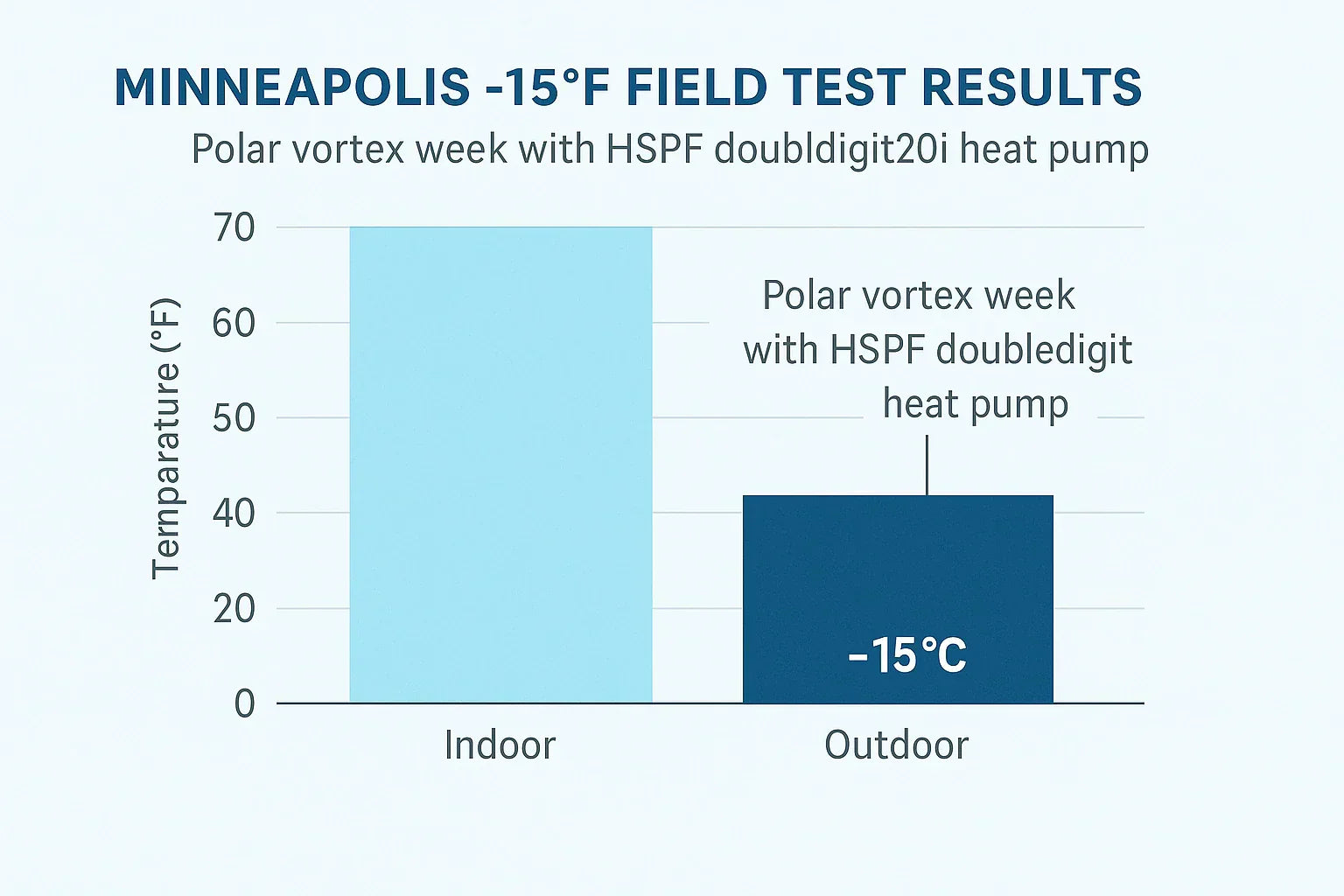Hi, I’m Alex Lane — your Home Comfort Advocate.
Heat pump technology has come a long way, especially for those of us dealing with brutal winters. But specs and sales brochures can only tell you so much. The real question most homeowners have is: How does this thing actually perform when it’s 10 below and snowing sideways?
That’s exactly what we’ll explore today. This guide breaks down real-life performance of leading cold climate heat pumps — region by region — so you can see how these systems hold up in the field, not just in lab tests.
Whether you’re in Minnesota or Maine, this will help you choose a heat pump that actually works where you live.
Why Regional Case Studies Matter
Heating loads vary dramatically across North America. A heat pump that performs well in Virginia might fall short in Vermont. Climate zone, humidity, backup heating strategy, and home insulation all impact real-world results.
That’s why the U.S. Department of Energy launched the Cold Climate Heat Pump Challenge, pushing manufacturers to design systems that stay efficient at 5°F and below — and field-testing them in places like Alaska, New York, and Wisconsin .
In this post, we’ll highlight five regions, real homes, and how top models fared through winter.
Northeast: Mitsubishi Hyper-Heat in Upstate New York
Average Winter Temp: 20°F
Model Tested: Mitsubishi Hyper-Heat
Home Size: 1,800 sq ft, built 1992
Result: Maintained 70°F inside during a -5°F cold snap. COP remained above 2.0.
This family in Albany upgraded from a 25-year-old oil furnace to a ductless Mitsubishi Hyper-Heat system. Not only did it eliminate their fuel deliveries, but their utility bills dropped by 20% over the season.
Why it worked: Tight building envelope, great attic insulation, and a right-sized multi-zone inverter setup.
📘 Learn more: NYS Clean Heat Program
Midwest: Carrier Infinity in Southern Minnesota
Average Winter Temp: 15°F
Model Tested: Carrier Infinity Heat Pump with Greenspeed Intelligence
Home Size: 2,400 sq ft, 1950s retrofit
Result: Consistent 68–70°F indoor temp, with backup gas kicking in only 5% of the time.
This older home was a perfect candidate for a dual-fuel system. The heat pump handled 90% of the heating season. The gas furnace only ran during extreme cold snaps — mostly below -10°F.
Why it worked: Smart thermostat staging, high-efficiency windows, hybrid backup strategy.
South: Daikin Fit in Northern Georgia
Average Winter Temp: 35°F
Model Tested: Daikin Fit
Home Size: 2,000 sq ft
Result: Performed well above 30°F but relied on auxiliary heat below freezing.
In the milder southern states, most cold climate heat pumps perform extremely well — but Daikin Fit stood out for its quiet operation and compact design. The system used electric heat strips occasionally, but overall heating costs were still lower than the homeowner’s old gas package unit.
Why it worked: Good match for regional temps, plus programmable setback settings.
Pacific Northwest: Lennox XP25 in Portland, Oregon
Average Winter Temp: 30°F
Model Tested: Lennox XP25
Home Size: 1,600 sq ft
Result: Delivered smooth, quiet heat through rainy months with no backup needed.
Thanks to the region’s moderate temps, the Lennox XP25 with Precise Comfort® tech ran in ultra-low stages most of the time — keeping efficiency high and bills low. The homeowner also appreciated the built-in dehumidification for shoulder seasons.
Why it worked: Inverter compressor + zoning + consistently above-freezing weather.
Mountain West: Fujitsu Halcyon in Denver, CO
Average Winter Temp: 25°F
Model Tested: Fujitsu Halcyon XLTH
Home Size: 1,300 sq ft ranch
Result: Struggled during Arctic blast (-12°F), but handled rest of season well.
This Fujitsu system did a solid job overall — until a week-long polar vortex pushed temps well below its design limits. The home had baseboard heaters as backup, which helped prevent comfort issues.
Why it worked: Supplemental heat planning + solar offset to reduce electric costs.
Key Takeaways: What We’ve Learned Across Regions
-
System sizing is critical. Over- or under-sized units perform worse in the cold.
-
Backup planning pays off. Whether it’s electric strips or gas, every home should have a secondary source.
-
Smart controls like programmable thermostats and staging logic improve efficiency dramatically.
-
Installation quality matters as much as the brand you choose.
Want to see how smart accessories can extend your system’s life and improve performance?
👉 Top Heat Pump Accessories for Cold Climates: Line Hide, Base Stands, Hoods & More
Don’t Just Trust the Label — Trust the Data
The ENERGY STAR Cold Climate certification is a great starting point, but there’s no substitute for real-life testing. Look at case studies, ask your contractor for local examples, and always request Manual J calculations during design.
For an overview of all your best cold climate options in 2025, don’t miss:
👉 Best Heat Pumps for Cold Climates in 2025
Final Thoughts from Alex Lane
Every region has different challenges — and there’s no “one best” heat pump. But there is a right system for your climate, budget, and goals.
✅ Talk to experienced local contractors
✅ Size it right with Manual J
✅ Consider hybrid setups or backup heat
✅ Prioritize inverter technology and proper install
When real-world performance aligns with smart design, you’ll get comfort, savings, and peace of mind — even when the mercury drops.
Alex Lane
Your Home Comfort Advocate







